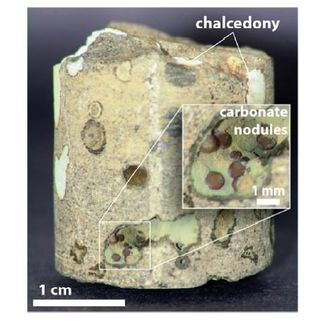New CO2 'scrubber' from ingredient in hair conditioners
Advertisement
Relatives of ingredients in hair-conditioning shampoos and fabric softeners show promise as a long-sought material to fight global warming by "scrubbing" carbon dioxide (CO2) out of the flue gases from coal-burning electric power generating stations, scientists reported at the 239th National Meeting of the American Chemical Society (ACS).
Their report, the first on use of these so-called aminosilicones in carbon dioxide capture, concluded that the material has the potential to remove 90 percent of CO2 from simulated flue gas. The new "scrubber" material may be less expensive and more efficient than current technologies for reducing emissions of carbon dioxide, the main "greenhouse" gas linked to global warming, the scientists say.
Robert Perry, Ph.D., and colleagues pointed out that coal-burning electric power plants are a major source of the carbon dioxide that has been building up in Earth's atmosphere. An estimated 2.8 billion tons of the gas enters the atmosphere each year from the 8,000 coal-fired power plants in the United States alone. Those are among 50,000 coal-fired generating stations worldwide. Perry cited a critical need for practical technology to remove carbon dioxide from flue gases before it enters the atmosphere. The new scrubber material would meet the goal of the U.S. Department of Energy, which funded the research, of developing carbon capture technologies with at least a 90 percent CO2 capture efficiency.
"We're very excited about this technology that may pave the way for a new process for carbon dioxide capture," Perry said. He is with GE Global Research in Niskayuna, N.Y. "The development of a low-cost solution for CO2 capture would go a long way in helping to address our clean energy goals. In the future, the gases that come out of power-plant smokestacks will be virtually free of carbon dioxide emissions."
Perry and colleagues hope to overcome the high costs and inefficiency of current CO2 capture methods with a new type of aminosilicone, a group of materials widely used in fabric softeners, hair conditioners, and flexible high-temperature plastics. In laboratory-scale tests using a device to simulate flue gas conditions of continuously streaming gas and relevant temperatures, the new material captured more than 90 percent of the CO2 added to the system.
If future tests at the pilot-scale in a power plant prove successful, the material would be used as part of a larger, active absorber system. In this scenario, the liquid aminosilicone solvent will absorb CO2 and be transferred to a desorption unit where CO2 would be removed from the aminosilicone and sequestered. The aminosilicone solvent would be recycled to react with more CO2-rich flue gas.























































